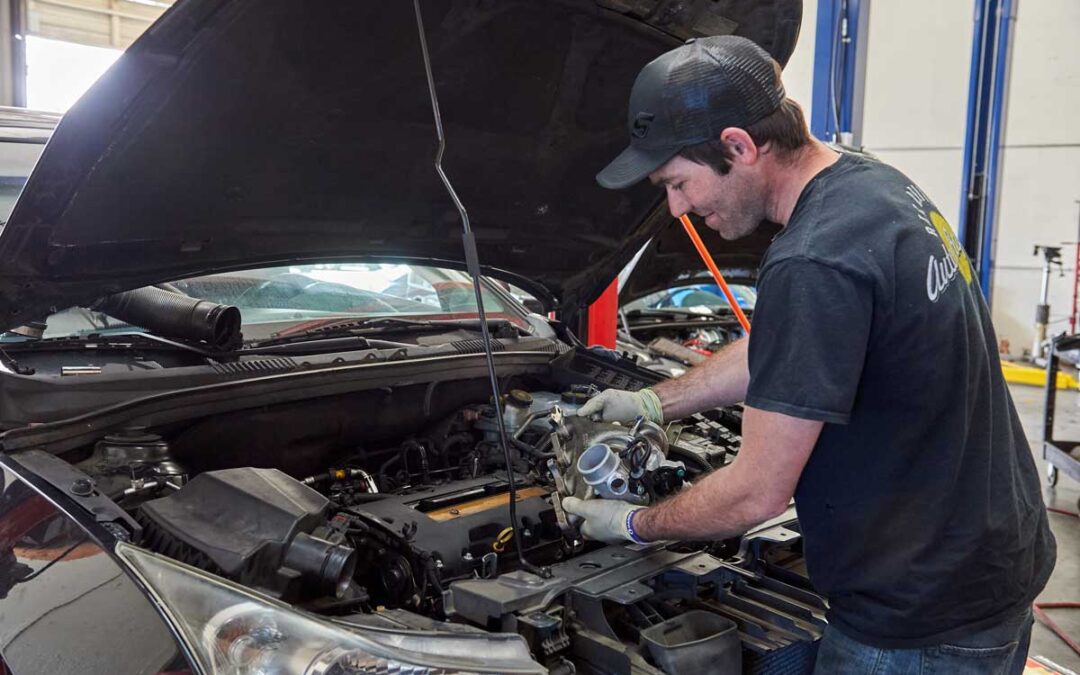Are you playing a shell game with the long-term health of your vehicle? If you’re like one in three motorists, then instead of winning you might really lose out. The American Automobile Association (AAA) recently did a study and found that a third of drivers are brushing off routine maintenance and repairs at the repair shop.
Going without routine repairs rackets up costs in the long run since you’re putting undue stress on your car and increasing the chances that you’ll need to take a ride upfront in a tow truck at some point.
Check Engine Light…Oh No!
That’s an understandable reaction to seeing the check engine light illuminated on your dashboard. Is that reaction justified? Sometimes, but usually the problem is something that a repair shop can easily handle.
Gas Cap Replacement
A relatively trivial reason that a check engine light might appear on your dashboard is because of a loose gas cap or a gas cap in need of replacement by a trusted repair shop.
A gas cap might seem ho-hum but you need one on there tightly so that gasoline stays within the fuel tank and the fuel system stays operating within the correct pressure range.
Oxygen Sensor Replacement
A simple oxygen sensor replacement is the number one reason that most people have their check engine light turn on. That’s across all kinds of makes and models, foreign and domestic vehicles, and no matter when your vehicle was manufactured.
The oxygen sensor in your vehicle – some people call it the Lambda sensor…a rose by any other name would smell as sweet – is the part of your emissions control system that monitors the gasoline to oxygen ratio.
Ideally, the ratio between oxygen and gasoline is around 14:7:1. The oxygen sensor will tell you whether your vehicle is burning too little fuel or too much fuel – this is called a “lean” mixture and a “rich” mixture, respectively.
The oxygen sensor helps to relay information to your vehicle’s onboard computer and ultimately optimize the air-to-fuel ratio. The oxygen present in the system will be determined by a number of factors: engine temperature, engine load, ambient air temperature, and barometric pressure.
An oxygen sensor isn’t that costly a repair in the relative scheme of things if you go to an experienced repair shop like All Around Auto Repair. You’ll do better by your engine and the environment by getting a new oxygen sensor when your check engine light turns on.
Catalytic Converter
The catayltic converter is part of your vehicle’s exhaust system, and it helps turn the harmful carbon monoxide (CO) created during the combustion process into the more innocuous carbon dioxide (CO2)
This won’t be on the quiz but the technical reason that this works, and the reason catalytic converters have that name, is because of a redox reaction (change in oxygen state). The effect? The exhaust gases from your internal combustion engine (whether gas or diesel) are less harmful.
Compared to swapping out the ignition coils on a V8 engine, swapping out a catalytic converter is a relatively easy procedure for the mechanics at a repair shop to tackle.
The combination of catalytic converters, oxygen sensors, and electronic fuel injection systems has made the environment safer and vehicles much more efficient and long-lasting.
Repair Shops Quickly Diagnose and Solve Problems
Take away the stress and uncertainty of your check engine light coming on and constant worrying about what the cause might be. The check engine light could be anything from the ignition coil, mass airflow sensor, or spark plugs in need of replacement to any of the issues discussed above.
Only by taking your vehicle in to an experienced repair shop like All Around Auto Repair can you get quick answers backed up years of reliable service and ultimately achieve peace of mind moving forward. The check engine light coming on can be stressful and frustrating. Get it checked out by making an appointment.




